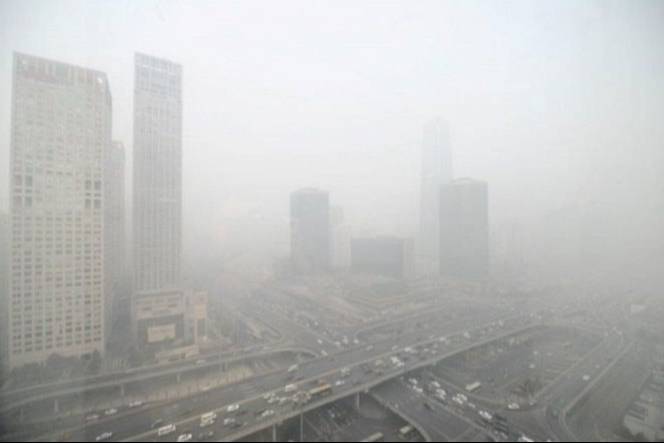The Ministry of Natural Resources and Environment proposes many solutions to control air quality in Viet Nam, especially in large cities. These include reviewing and advising the government and the prime minister to issue significant macro-level policies related to air quality management, focusing on policies on environmental protection tax and environmental protection fees for emissions. At the same time, standards and regulations on-road motor vehicle emissions should be tightened.
Alarming figures
Monitoring data from the Ministry of Natural Resources and Environment (MONRE) shows that pollution has increased alarmingly in the past 10 years, concentrated in large cities such as Hanoi and Ho Chi Minh City, where the main air pollution parameter is currently fine dust PM2.5. Air pollution has increased significantly since socio-economic activities recovered after the Covid-19 pandemic.
There were times when the air quality index (AQI threshold) reached a lousy level, affecting human health and socio-economic development activities. Pollution is concentrated in winter, from September of the previous year to March of the following year.
The most significant causes of air pollution in large cities are transportation activities. Next are sourced from industrial production activities, construction, burning, and using honeycomb coal stoves. In addition, weather and climate factors also have a significant impact on air quality, especially in the northern provinces and cities.
Deputy Director of the Department of Environmental Pollution Control (Ministry of Natural Resources and Environment) Le Hoai Nam admitted that air quality control still faces many difficulties. Resources (organization, human resources, funding) for implementing air quality management activities, monitoring and publishing air quality information have not met practical requirements, staff capacity has not met requirements, and there are few programs and tasks for the field of air pollution control and air quality improvement.
Responsibilities for implementing the management of air pollution sources in large cities and densely populated areas are still scattered, and they belong to many sectors and fields such as transportation, construction, industry, agriculture, and local People's Committees.

Macro solutions for air pollution control
To address rising air pollution, the Ministry of Natural Resources and Environment (MONRE) is drafting emission standards for motorcycles and an implementation roadmap, which will be submitted to the Government for approval. This initiative aims to create an essential tool for controlling one of Viet Nam's largest pollution sources.
MONRE is also intensifying efforts to inspect, monitor, and penalize violations related to air emissions. Industrial facilities, especially those generating significant dust and emissions, must implement stringent control measures to ensure compliance with environmental regulations.
Minister Đỗ Đức Duy recently proposed that central and local authorities, particularly in major urban areas, designate November 2024 as a milestone for coordinated actions. This would symbolize a unified, intersectoral commitment to tackling air pollution—an issue of growing public concern.
Establishing low-emission zones (LEZs)
At the local level, Hanoi is finalizing a draft resolution to define criteria, conditions, and procedures for establishing low-emission zones (LEZs) in the city. LEZs restrict or regulate vehicle access based on emission levels to reduce air pollutants and improve urban air quality.
This innovative concept introduced in Viet Nam is expected to significantly impact transportation, particularly motorcycles, to combat air pollution effectively.
Experts emphasize that implementing LEZs in Hanoi is a crucial solution to addressing air pollution caused by traffic. The initiative is anticipated to serve as a model for other cities aiming to improve environmental quality while fostering sustainable urban development.